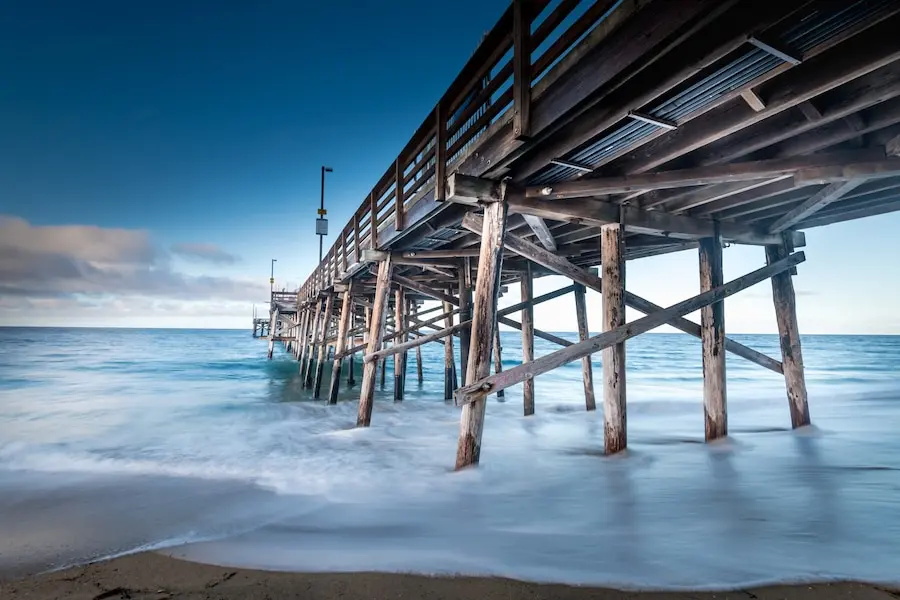Flounder: Habitats - Piers
Table of Contents
Fishing Piers for Flounder

Image Credit: wirestock on Freepik
Overview of Fishing Piers for Flounder
Piers create a complex fishing environment where both natural and man-made structures provide diverse microhabitats for flounder. These structures often span channels, offer shelter, and create natural breaks in the current. Variations such as a channel under or adjacent to the pier or a pier built on the jetty of an inlet can significantly influence where flounder congregate.
Features Found Around and Under Piers
-
Under-Pier Channels:
Piers often cross narrow channels where tidal currents concentrate baitfish. These channels become natural feeding corridors where flounder lie in wait. -
Structural Elements:
The posts, pilings, and overhangs of a pier create zones of reduced light and localized turbulence. These features offer excellent cover for flounder, allowing them to blend into the substrate until prey drifts by. -
Piers on Jetties/Inlets:
When a pier is located on the jetty of an inlet, the combination of open water and sheltered areas forms a dynamic environment. Here, the mixing of deeper water with calmer sheltered pockets tends to attract flounder.
Flounder Behavior in Relation to Piers
- Location:
Flounder are typically found lying low on the bottom under or near piers, especially in channels or along the edges where currents are concentrated. - Behavior:
They act as ambush predators—remaining motionless on the sandy or muddy substrate until a suitable prey item comes near. Their behavior may vary with tidal changes; strong currents can trigger increased activity as prey is flushed into the channels.
Targeting Flounder Near Piers
Baits and Rigs
-
Live Baits:
Commonly used live baits include pilchards, finger mullet, and shrimp. These are typically rigged on a sliding sinker rig or the popular Fish Finder Rig, which keeps the bait close to the bottom while allowing natural movement. -
Lure Options:
Soft plastic lures that mimic injured baitfish are effective. Natural, subdued colors that blend with the substrate (sandy, brown, or muted green) work best.
Retrieve Techniques
-
Stop-and-Go Retrieve:
Alternate between smooth motion and deliberate pauses to simulate injured or drifting prey. This variation can trigger strikes from flounder that are testing your presentation. -
Erratic Twitching:
Introduce sudden, sharp twitches into your retrieve to mimic the unpredictable movement of wounded baitfish, often provoking an explosive strike. -
Bouncing with Bucktails:
Use bucktail jigs with a bouncing action off the bottom. Jigging or bouncing these jigs mimics the rapid, erratic movements of fleeing prey and is especially effective when used in conjunction with the Fish Finder Rig.
Community and Expert Angler Tips
-
Local Conditions:
Check tide and current charts before heading out. Tidal changes near piers can significantly influence flounder behavior and strike frequency. -
Learning Through Video:
Watching detailed video tutorials can help refine your approach. Look for experts who specialize in Pier fishing for Flounder to learn advanced techniques.
Click the thumbnail above to watch a detailed guide on fishing Piers for Flounder.
For more tips, check out "fishing Piers for Flounder tips" on YouTube
Popular Search Terms Related to Piers for Flounder
| Search Term | Thumbnail | Link |
|---|---|---|
| Pier Flounder Techniques | Watch Video | |
| Best Live Baits for Flounder Near Piers | Watch Video | |
| Pier Retrieve Strategies for Flounder | Watch Video | |
| Where to Find Flounder Around Piers | Watch Video | |
| Flounder Fishing Tips Near Piers | Watch Video |
Ask AI for More Info
Try our AI assistant for free—sign up to access this powerful feature.
👉 Sign Up to Ask AI